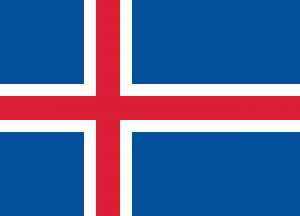Difference between revisions of "Language/Icelandic/Grammar/Negation"
m (Quick edit) |
(No difference)
|
Revision as of 18:36, 20 February 2023
Hi Icelandic learners! 😊
In this lesson, we will be discussing the basics of negation in Icelandic. Negation is an important part of any language, and it is essential to understand how to use it correctly in order to communicate effectively. We will look at the different ways to form negative sentences, as well as some common mistakes to avoid.
Negation is a way of expressing the opposite of something. In Icelandic, there are two main ways to express negation: using the word "ekki" (not) or using the negative verb form. Let's take a look at each of these in more detail.
Using "Ekki"
The most common way to express negation in Icelandic is to use the word "ekki". This is a simple and straightforward way to make a sentence negative. For example:
- Ég tala ekki íslensku - I do not speak Icelandic
- Ég er ekki íslenskur - I am not Icelandic
It is important to note that when using "ekki", the verb always comes first. This is different from English, where the verb usually comes after the subject.
Negative Verb Forms
Another way to express negation in Icelandic is to use the negative verb form. This is done by adding the suffix "-a" to the end of the verb. For example:
- Ég talaði ekki íslensku - I did not speak Icelandic
- Ég er ekki íslenskur - I am not Icelandic
It is important to note that when using the negative verb form, the verb always comes after the subject. This is different from English, where the verb usually comes before the subject.
Common Mistakes
When using negation in Icelandic, it is important to be aware of some common mistakes. One of the most common mistakes is to forget to add the "-a" suffix to the verb when using the negative verb form. For example:
- Ég tala ekki íslensku - I do not speak Icelandic (correct)
- Ég tala ekki íslenska - I do not speak Icelandic (incorrect)
Another common mistake is to forget to use the word "ekki" when making a sentence negative. For example:
- Ég tala ekki íslensku - I do not speak Icelandic (correct)
- Ég tala íslensku - I do not speak Icelandic (incorrect)
Finally, it is important to remember that when using "ekki", the verb always comes first. This is different from English, where the verb usually comes after the subject.
Practice
To improve your Icelandic Grammar, you can also use the Polyglot Club website. Find native speakers and ask them any questions!
Here is a table with some examples of negation in Icelandic:
| Icelandic | Pronunciation | English Translation |
|---|---|---|
| Ég tala ekki íslensku | /ˈtala ˈɛkːi ˈiːslɛnsku/ | I do not speak Icelandic |
| Ég er ekki íslenskur | /ˈɛr ˈɛkːi ˈiːslɛnskʏr/ | I am not Icelandic |
| Ég talaði ekki íslensku | /ˈtalaði ˈɛkːi ˈiːslɛnsku/ | I did not speak Icelandic |
| Ég tala ekki íslenska | /ˈtala ˈɛkːi ˈiːslɛnska/ | I do not speak Icelandic |
| Ég tala ekki íslensku | /ˈtala ˈɛkːi ˈiːslɛnsku/ | I do not speak Icelandic |
